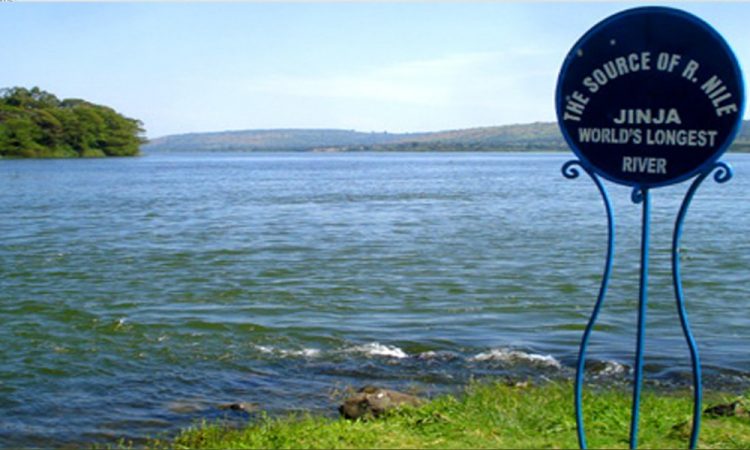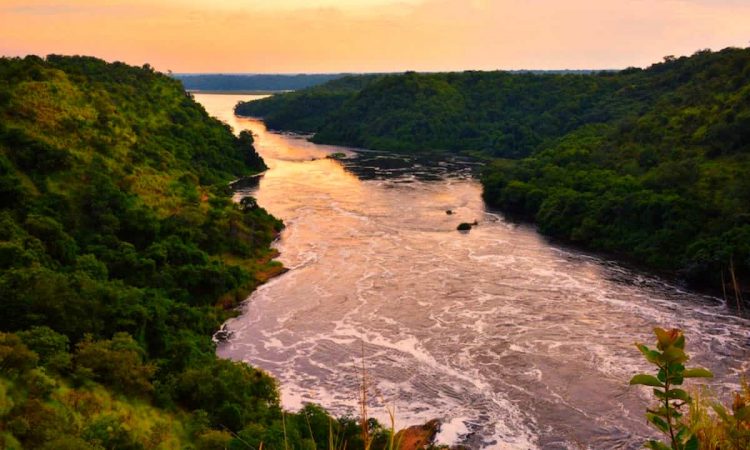Where does the Nile River start and end: Intriguing Fact
The Nile River, one of the world’s longest and most historically significant waterways, stretches approximately 6,650 kilometers (4,135 miles) across northeastern Africa.
Its journey from source to mouth crosses diverse landscapes, climates, and cultures, shaping civilizations for millennia. Understanding where the Nile begins and ends, along with its geographical, ecological, and cultural significance, provides insight into its vital role in the region.
Where the Nile River Starts
The Nile has two primary tributaries: the White Nile and the Blue Nile, which converge in Khartoum, Sudan, to form the main Nile River. Determining the exact source of the Nile has been a subject of debate and exploration for centuries, as both tributaries have their own origins.
White Nile
The White Nile is considered the primary source of the Nile due to its length. Its furthest source is often traced to the Nyungwe Forest in Rwanda, where the Rukarara River begins.
This small stream, located in the highlands near Lake Kivu, is recognized by some geographers as the Nile’s most distant headwater. The Rukarara flows into the Mwogo River, then the Nyabarongo River, which becomes the Kagera River.
The Kagera feeds into Lake Victoria, the largest lake in Africa, located in Uganda, Tanzania, and Kenya. From Lake Victoria, the White Nile emerges at Jinja, Uganda, where it begins its northward journey through Lake Kyoga and into South Sudan.
In South Sudan, it passes through the vast Sudd wetlands, a massive swamp that significantly slows its flow, before reaching Khartoum.

Blue Nile
The Blue Nile originates at Lake Tana in the Ethiopian Highlands. A spring known as Gish Abay (or “Little Nile”) in Ethiopia is traditionally considered its source. The Blue Nile flows southeast through Ethiopia, forming dramatic gorges and waterfalls, such as the Tis Abay (Blue Nile Falls), before turning northwest to meet the White Nile in Khartoum.
Although shorter than the White Nile, the Blue Nile contributes about 60-70% of the Nile’s water volume during the rainy season, making it critical to the river’s flow.
The debate over the Nile’s “true” source—whether in Rwanda or Ethiopia—stems from historical explorations and differing definitions of a river’s headwater.
Modern consensus leans toward the Rukarara in Rwanda as the furthest point, but both sources are essential to the Nile’s identity.
Where the Nile River Ends
The Nile River ends at its delta in northern Egypt, where it empties into the Mediterranean Sea. The Nile Delta, a fertile, fan-shaped region, spans about 240 kilometers (150 miles) along the coast and extends 160 kilometers (100 miles) inland.
The delta is formed by the river splitting into multiple distributaries, with the two main branches being the Rosetta Branch (west) and the Damietta Branch (east). These branches create a lush, triangular region of silt-rich land, historically vital for agriculture and settlement.
Before reaching the delta, the Nile flows through Egypt’s arid landscape, passing iconic cities like Luxor and Cairo. North of Cairo, the river fans out into the delta, where sediment deposition has created one of the most productive agricultural regions in the world.
The delta’s wetlands and coastal lagoons also support diverse ecosystems, though they face threats from rising sea levels and human development.
Key Features and Significance of the Nile
- Geographical Scope: The Nile’s basin spans 11 countries: Rwanda, Burundi, Democratic Republic of Congo, Tanzania, Kenya, Uganda, South Sudan, Ethiopia, Sudan, Egypt, and Eritrea (to a lesser extent). Covering about 3.4 million square kilometers (1.3 million square miles), the basin supports over 300 million people, many of whom depend on the river for water, agriculture, and livelihoods.
- Historical and Cultural Importance: The Nile was the lifeblood of ancient Egyptian civilization, enabling agriculture, trade, and cultural development. Its predictable flooding (before modern dams) deposited nutrient-rich silt, making the surrounding lands fertile. Iconic monuments like the pyramids and temples of Luxor were built along its banks. In Sudan, the ancient Kingdom of Kush also thrived along the Nile. Today, the river remains central to the identity and economy of Egypt, Sudan, and other riparian nations.
- Ecological Role: The Nile supports diverse ecosystems, from the highlands of Rwanda and Ethiopia to the wetlands of the Sudd and the delta’s marshes. It is home to species like the Nile crocodile, hippopotamus, and numerous fish, including the Nile perch. The river’s health is critical for biodiversity, but it faces challenges from pollution, overfishing, and climate change.
- Hydropolitics and Modern Challenges: The Nile’s water is a contentious resource. Egypt and Sudan historically dominated its use, formalized by agreements like the 1959 Nile Waters Agreement, which allocated most of the river’s flow to them. However, upstream nations, particularly Ethiopia, have challenged this status quo. The Grand Ethiopian Renaissance Dam (GERD), under construction on the Blue Nile, has sparked tensions over water security, as it could reduce downstream flow to Sudan and Egypt. Negotiations among Nile Basin countries, facilitated by initiatives like the Nile Basin Initiative, aim to promote equitable water sharing, but disputes persist.
- Human Impact and Environmental Threats: The Nile faces significant environmental pressures. The Aswan High Dam in Egypt, completed in 1970, controls flooding and provides hydroelectric power but has altered the river’s natural flow, reduced sediment to the delta, and increased coastal erosion. Urbanization, industrialization, and agricultural runoff contribute to pollution. Climate change poses further risks, with shifting rainfall patterns affecting the river’s flow, particularly in the Blue Nile’s watershed.
- Economic Importance: The Nile supports agriculture, fishing, and tourism. In Egypt, the delta produces crops like rice, wheat, and cotton, feeding millions. In Uganda and Ethiopia, hydropower from the Nile powers economic growth. Tourism along the river, including Nile cruises and visits to historical sites, generates significant revenue.
Journey of the Nile: A Summary
From its furthest source in Rwanda’s Nyungwe Forest, the White Nile begins as a trickle, winding through Burundi, Lake Victoria, and the Sudd wetlands before meeting the Blue Nile in Khartoum. The Blue Nile, starting at Lake Tana in Ethiopia, adds substantial volume and sediment.
Together, they form the main Nile, which flows through Sudan’s deserts and Egypt’s fertile valley before fanning into the delta and reaching the Mediterranean Sea.
This journey crosses tropical forests, savannas, wetlands, and arid regions, sustaining millions of people and diverse ecosystems.

What You Need to Know
- Geopolitical Tensions: The Nile’s water is a shared resource, and disputes over its use, especially regarding the GERD, affect regional stability. Understanding the balance of power and cooperation among Nile Basin countries is key to appreciating the river’s modern significance.
- Environmental Fragility: The Nile’s ecosystems are under threat from human activities and climate change. Conservation efforts and sustainable management are critical to preserving its ecological and economic value.
- Cultural Legacy: The Nile is more than a river; it’s a cradle of civilization. Its influence on ancient and modern societies underscores its enduring importance.
- Travel and Exploration: For those interested in visiting, the Nile offers opportunities to explore its sources in Rwanda or Ethiopia, cruise its waters in Egypt, or witness its biodiversity in Uganda’s Murchison Falls or Sudan’s Sudd.
In conclusion, the Nile River’s journey from the highlands of Rwanda and Ethiopia to the Mediterranean Sea encapsulates a remarkable story of nature, history, and human dependence.
Its sources in the White and Blue Niles and its endpoint in the fertile delta highlight its role as a lifeline for millions. Understanding the Nile requires appreciating its geographical complexity, ecological diversity, and the challenges of managing a shared resource in a changing world.
Whether you’re drawn to its historical significance, ecological richness, or modern geopolitical dynamics, the Nile remains a river of profound global importance.